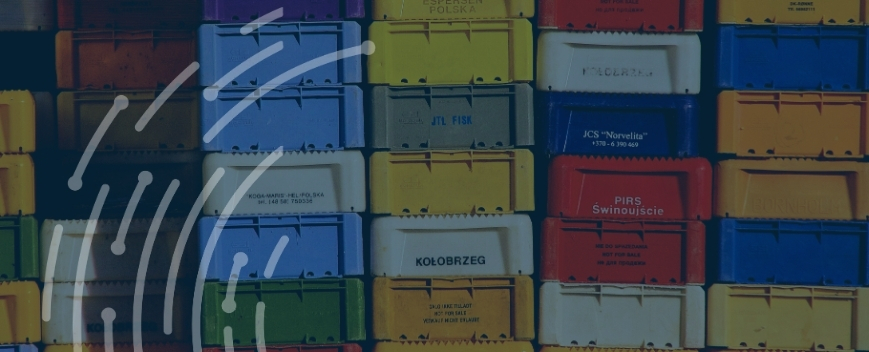Single window systems

Access trade, receivables and supply chain finance
We assist companies to access trade and receivables finance through our relationships with 270+ banks, funds and alternative finance houses.
Get startedContents
Customs and border security agencies in many countries provide their services online with the aid of electronic tools.
These digital offerings can include activities such as document submission, payment of duties and taxes, security programs, and quick release programs, to name a few.
As technology has progressed, digital tools are proving to be increasingly more effective and efficient at providing the needed services.
While this is the case, many analogue processes and organisational structures, like an assortment of disparate government departments all requiring similar information, are creating redundancies and inefficiencies within the customs systems of many countries.
To add to this, many of these government departments offer differing levels of service for customers; some require importers and exporters to provide the same information in multiple different formats to each department.
This adds complexity and disincentivises trade.
Much like the private sector has turned to IT systems like enterprise resource planning (ERP), so too are some governments looking to collate different process into a digital system.
This type of system is called a single window system.
What is a single window system?
A single window system is a trade facilitation concept that some customs and border security agencies have implemented to allow an international trader to submit information to a single agency in order to acquire the necessary documents, permits, and clearances for their shipment.
Such a system helps to coordinate the relevant government organisations through a single digital platform enabling businesses to submit all import, export, and transit information to regulatory agencies through one electronic portal.
With such a system in place, all of the relevant government departments will be able to access the information and documents that they need while eliminating the need for businesses to duplicate efforts to get it to them.
A single window system has numerous benefits for international trade.
What are the benefits of a single window system?
A single window can benefit a wide range of different stakeholders if it is implemented effectively.
According to the United Nations Economic Commission for Europe’s Trade Facilitation Implementation Guide, some of these stakeholders and benefits include:
- Governments: better trade statistics and increased revenue through enhanced compliance and improved efficiency.
- Traders: less bureaucracy leading to faster clearance times and a more transparent and predictable customs process.
- Customs officers: improved productivity through upgraded infrastructure, a more structured and controlled working environment, and an increase in customs revenue.
- The national economy: reduced corruption through improved transparency, governance, and fewer opportunities for physical interaction.
What is needed to successfully adopt a single window system?
In order to successfully implement a national single window system, several things are needed.
These can include:
- collaboration and support from the private sector for the creation of a public interface
- strong political support (particularly with regard to budget, human resources, and technological infrastructure)
- Investment in technology infrastructure to link all the government departments and regulatory agencies
- strong legal frameworks for information exchange, security, and privacy
- cooperation between and integration of government departments and regulatory agencies
National and regional single window systems
Single window systems were originally conceived as a national conecpt, but have since grown to include the th eidea of regional integration.
There are many examples of national and regional single window systems in place today.
In fact, estimates indicate that all major global economies have developed and implemented some form of a single window system for trade facilitation.
Some of the earliest adopters were countries in Africa, Asia, and Latin America while countries in Europe have tended to lag behind with their development.
Here are some examples of single window systems that have either been implemented or are in the process of being implemented:
- In 2003, South Korea began the first stage of implementation of its single window system, called UNI-PASS, which became fully operational in 2009.
- The United States implemented its single-window system, Automated Commercial Environment (ACE), in 2015.
- With the help of the World Bank Group, Ethiopia released its Ethiopian Electronic Single Window for Trader in January 2020.
- The UK government has committed £180 million to build a UK single trade window as part of its 2025 Border Strategy.
The single window concept, however, is not limited to the national sphere.
There are some initiatives looking to establish an electronically integrated regional single window system.
- The Association of Southeast Asian Nations (ASEAN) Single Window (ASW) initiative aims to integrate the national single windows of ASEAN countries by allowing the electronic exchange of customs information and expediting cargo clearance.
- The Eurasian Economic Union (EEU) is working towards its Eurasian Economic Community Single Window Initiative to harmonise data exchange standards and promote interoperability as a means to facilitate access to data in e-commerce and digital trade.
- The European Union (EU) has introduced an interoperable European Maritime Single Window environment (EMSWe) with harmonised interfaces, to simplify reporting obligations for ships arriving at, staying in and departing from EU ports.
Single window systems help small businesses
Single window systems, whether regional or national, are designed to facilitate trade.
They do this by making it easier for businesses, particularly small businesses that simply do not have the wherewithal to navigate unnecessarily complex border bureaucracy, to reach new global markets.
- Customs Resources
- All Customs Topics
- Podcasts
- Videos
- Conferences














